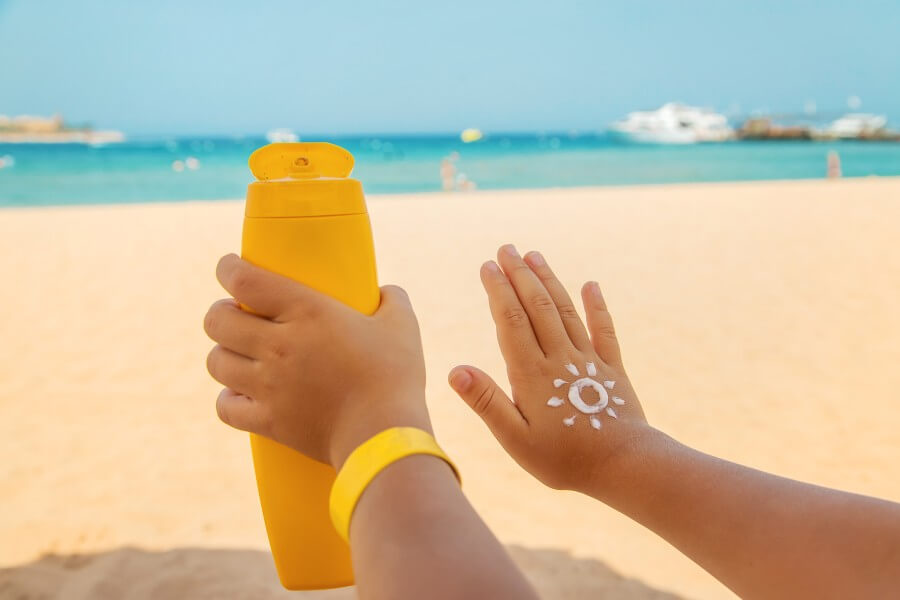Ingredients, Skin Care
Chemical Vs Physical Sunscreen – Which One Should You Use?
When it comes to choosing the right sunscreen, the decision often boils down to two types: chemical and physical. Each has its unique properties and benefits, making it essential to understand their differences to determine which is best for your skin. This article explores the advantages and potential drawbacks of both types, providing the information needed to make an informed choice.
Understanding Chemical Sunscreens
Chemical sunscreens work by absorbing UV radiation and converting it into heat, which is then released from the skin. These sunscreens contain organic compounds such as oxybenzone, avobenzone, and octinoxate. They are popular due to their lightweight texture, which tends to blend seamlessly into the skin without leaving a white cast.
One of the key benefits of chemical sunscreens is their ability to offer broad-spectrum protection. This means they can effectively shield the skin from both UVA and UVB rays. Additionally, chemical sunscreens are often water-resistant, making them an excellent choice for activities like swimming or intense exercise. However, they need to be applied 15-30 minutes before sun exposure to ensure they have absorbed into the skin and are fully effective.
Potential Concerns with Chemical Sunscreens
Despite their benefits, chemical sunscreens have some potential drawbacks. For individuals with sensitive skin, these formulations can sometimes cause irritation or allergic reactions. Some studies suggest that certain ingredients in chemical sunscreens can penetrate the skin and enter the bloodstream, leading to concerns about long-term safety. For example, the FDA is still evaluating the safety of ingredients like oxybenzone and octinoxate, which have been found in measurable amounts in the body after application.
Furthermore, chemical sunscreens can sometimes cause stinging, especially around the eyes. This can be uncomfortable and may deter people from reapplying as needed. It’s also worth noting that the environmental impact of chemical sunscreens has been a growing concern. Ingredients like oxybenzone have been found to contribute to coral reef bleaching, leading to bans in some regions.
Exploring Physical Sunscreens
Physical sunscreens, also known as mineral sunscreens, work by creating a barrier on the skin that reflects and scatters UV radiation. The main active ingredients in these sunscreens are zinc oxide and titanium dioxide. One of the significant advantages of physical sunscreens is their immediate effectiveness; they start working as soon as they are applied.
Physical sunscreens are often recommended for those with sensitive or reactive skin because they are less likely to cause irritation. They are also preferred for use on children and during pregnancy due to their minimal risk of absorption into the bloodstream. Unlike chemical sunscreens, physical sunscreens are less likely to clog pores, making them a good option for individuals prone to acne.
Drawbacks of Physical Sunscreens
However, physical sunscreens are not without their challenges. One of the most common complaints is their thicker consistency, which can leave a white or ashy residue on the skin. This can be particularly noticeable on darker skin tones, making the product less aesthetically pleasing. Advances in formulation have improved this issue, but it can still be a concern for many users.
Physical sunscreens may also be less water-resistant than their chemical counterparts, requiring more frequent reapplication, especially during activities like swimming or sweating. Additionally, because they sit on top of the skin rather than absorbing, they can be rubbed or washed off more easily.
Choosing the Right Sunscreen for Your Needs
Deciding between chemical and physical sunscreen ultimately depends on individual skin type, lifestyle, and personal preferences. For those with sensitive skin or concerns about ingredient absorption, physical sunscreens may be the better option. On the other hand, if you prefer a lightweight, easy-to-apply formula and plan to be active outdoors, chemical sunscreens might be more suitable.
It’s important to note that regardless of the type, regular and adequate application of sunscreen is crucial for effective protection. The American Academy of Dermatology recommends using a broad-spectrum sunscreen with an SPF of 30 or higher, applying it generously to all exposed skin, and reapplying every two hours or after swimming or sweating.
Environmental Impact and Ethical Considerations
The environmental impact of sunscreens has become a significant consideration for many consumers. Studies have shown that certain chemicals in sunscreens, such as oxybenzone and octinoxate, can harm marine life, particularly coral reefs. As a result, some regions have banned sunscreens containing these ingredients to protect their marine ecosystems. For environmentally conscious consumers, physical sunscreens with non-nano zinc oxide or titanium dioxide are often recommended, as these are considered safer for marine environments.

Ethical considerations also come into play when choosing a sunscreen. Many consumers look for cruelty-free and vegan options. Fortunately, there are numerous brands offering sunscreens that meet these criteria, allowing individuals to protect their skin while aligning with their values.
Innovations in Sunscreen Formulations
The skincare industry continues to innovate, developing new formulations that address common concerns associated with both chemical and physical sunscreens. For example, tinted mineral sunscreens have become popular for their ability to blend more seamlessly with various skin tones, reducing the white cast typically associated with physical sunscreens. Similarly, advancements in chemical sunscreen formulations aim to minimize irritation and improve safety profiles.
Consumers can now find hybrid sunscreens that combine both chemical and physical filters, offering the benefits of both types while minimizing their drawbacks. These products provide broad-spectrum protection, are easier to apply, and are often more cosmetically elegant.
The Importance of Sunscreen for Skin Health
Regardless of the type of sunscreen chosen, its role in protecting skin health cannot be overstated. According to the Skin Cancer Foundation, regular daily use of SPF 15 sunscreen can reduce the risk of developing squamous cell carcinoma by about 40% and melanoma by 50%. This statistic highlights the critical importance of incorporating sunscreen into daily skincare routines, even on cloudy days or when indoors near windows.
In addition to preventing skin cancer, sunscreen plays a vital role in reducing signs of aging. UV exposure is a significant factor in the development of fine lines, wrinkles, and hyperpigmentation. By protecting the skin from UV damage, sunscreen helps maintain a more youthful and even complexion.
Conclusion
Choosing between chemical and physical sunscreen requires consideration of various factors, including skin type, lifestyle, environmental impact, and personal preferences. Both types have their unique advantages and potential drawbacks, making it essential to weigh these factors carefully. Ultimately, the best sunscreen is the one that you will use consistently and correctly. By prioritizing sun protection, you can enjoy healthier skin and reduce the risk of sun-related damage and skin cancer.






